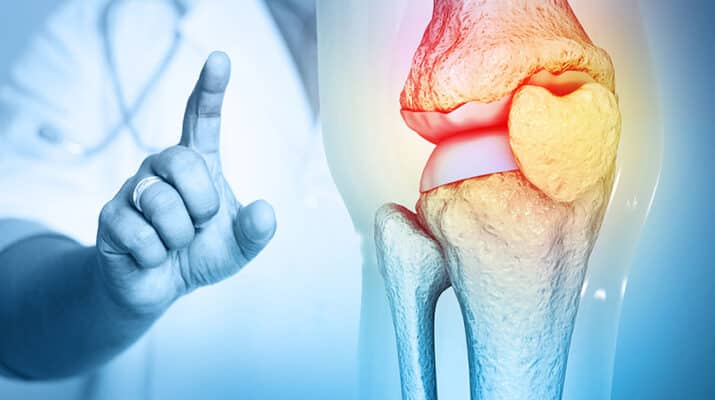By Deborah Jeanne Sergeant
Although fall prevention is important, keeping bones strong in case of a fall represents another vital strategy for avoiding bone breaks.
Strong bones rely on a few key areas. Strong bones require a proper diet, which may need supplementation.
“Our bones are in a constant balance of break down and build up,” said Sharon Brangman, chairwoman of geriatric medicine, director of the geriatric medicine fellowship program and director of the Upstate Center of Excellence for Alzheimer’s Disease at SUNY Upstate Medical University.
She recommends taking a supplement of calcium citrate, about 1,000 to 1,200 mg. daily.
“Calcium carbonate isn’t absorbed as well and can cause constipation,” she said. “Divide the calcium over different parts of the day; your body doesn’t absorb it at once.”
Dietary sources of calcium include milk, cheese and yogurt. For those with lactose intolerance — which includes many middle-aged and older adults, lactose-free milk and aged cheese is often well-tolerated.
“Lactose-free milk doesn’t taste any different from regular milk,” Brangman said.
Some fortified foods such as calcium-fortified orange juice may include milk solids so read the label. Non-dairy sources of calcium include sardines with bones, leafy green vegetables, certain nuts, dried fruits and figs.
“Avoid sodas,” Brangman added. “The phosphoric acid can interfere with calcium absorption.”
Don’t displace nutritious foods with nutrient-void choices. A care provider can recommend the right amount of calcium and other nutrients, as the exact amount needed depends upon age, gender and other factors.
Kristine Cervantes, doctor of physical therapy and professor of practice in the department of occupational therapy at the Purcell School of Professional Studies at Le Moyne College, said that overall health, including healthy bones, “involves a good balance of diet, exercise, sleep and lifestyle.”
In addition to calcium, Cervantes recommends vitamin D.
“For calcium to be absorbed, we need vitamin D, which our bodies can produce through our skin and exposure to sunlight,” she said.
She listed as vitamin D sources: oily fish such as salmon, sardines and mackerel; egg yolks and liver.
“Like calcium, many foods are fortified with vitamin D such as milk, orange juice and cereal,” Cervantes added. “Other nutrients required for good bone health include phosphorus (found in dairy products and meat), magnesium (bananas, nuts and avocados), vitamins A (eggs, green leafy vegetables, carrots), K (leafy greens, avocado) and C (citrus fruits).”
She emphasizes stimulating bones to become stronger through weightbearing or impact activity such as walking, running, tennis, pickleball, dancing, or anything that requires weight to be placed on the bones.
“Swimming, while an excellent exercise for endurance and flexibility, would not be an example since the bones do not take on the weight of the body,” Cervantes said. “Another form of exercise to stimulate and stress the bones is through muscle training exercise. These can include body weight exercises such as squats, pull ups or push-ups as well as weight machines, resistance bands or free weights.”
Building muscle stresses bones so that bones build back stronger.
People with osteoporosis are losing bone at a faster rate than they’re replacing it with new bone, so Cervantes recommends low-impact exercise such as walking or using resistance bands.
“This process of ‘bone remodeling’ is a major reason why therapists promote early mobility after injury or during hospitalization,” Cervantes said. “Prolonged bedrest or inactivity weakens bones. Injury or illness or not, don’t be a couch potato if you want strong bones.
“It is also interesting to know that we can influence bone strength at a young age by engaging in activities that involve weightbearing and strengthening. Doing so can build up a reserve of bone density to prepare for the aging process when the remodeling process may change, and breakdown and buildup of bone is not equalized.”
In addition to eating right and engaging in weight-bearing exercise, Cervantes said that some choices negatively affect bone health:
“1. Alcohol: Blocks calcium absorption and disrupts the bone remodeling process. Not only does it weaken bones but can slow the healing process after a fracture. Chronic alcohol use can disrupt hormones needed for bone health.
2. Salt: reduces calcium content by increasing its excretion through the kidneys.
3. Soda: phosphoric acid draws calcium from the bones; caffeinated sodas are a double whammy.
4. Coffee, Tea with Caffeine: disrupts the absorption of calcium.”
Emotional stress also affects bone health. Poor coping mechanisms such as substance use and poor eating habits can harm health and cause bone loss. Internalizing stress increases the body’s fight-or-flight mechanism, which raises cortisol levels and inflammation.
When stressed, it’s important to get enough rest, exercise and healthful food along with using healthful means of coping, such as engaging in an enjoyable hobby and talking with a trusted friend.

